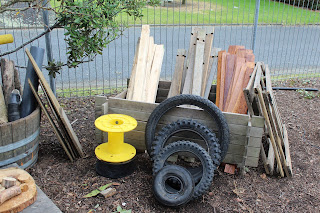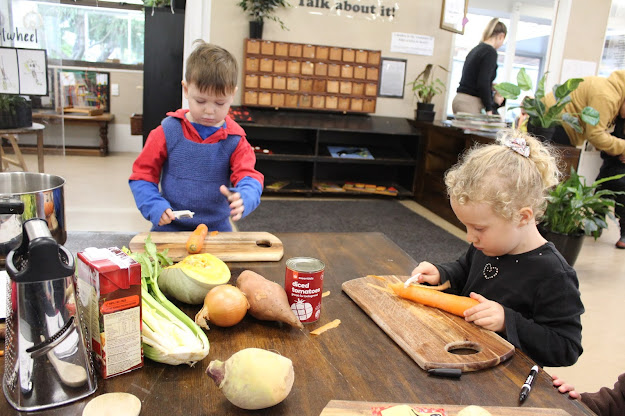Loose parts for learning
Keeping with the flow of refreshing our spaces, we decided to upgrade our loose parts area outside. Whilst bringing the new loose parts out to the play area, the tamariki were very intrigued by what materials there were and what they were going to be used for.
What are loose parts?
They are materials that can be used in a variety of ways. They are open ended resources that have no specific purpose and children make them into whatever they can imagine.
Daly & Beloglovsky state loose parts are “Beautiful found objects and materials that children can move, manipulate, control and change while they play. Children can carry, combine, redesign, line up, take apart and put loose parts back together in almost endless ways” (2016).
Torben: "We're builders aye Joe."
The value of loose parts…
Children, especially in their early years, are highly creative and full of imagination. Having an environment with loose parts allows children to invent, create and test their ideas develop their working theories.
Kace: "I'm trying to balance it."
Kace: "I need that there."
Kace: "Now a car seat, that's finished, now I'm making a car seat."
Bringing in new pieces has and will continue to allow the tamariki to explore the objects in a new way. When we offer loose parts these objects and materials allow children to be engineers and to be enveloped by their creativity and imagination.
“The unprescription nature of these loose parts in combination with children’s inventiveness and creativity results in them using the items in lots of different ways, enabling all ages, genders and abilities to find ways to play and socialise together” (The Childrens Scrap Store, 2018).
Alongside creating engineering opportunities it has also allowed for a lot of discussion and negotiations to occur, whether that is through what pieces children want to use or in how the structure will be created.
“The structures children create in Loose Parts Play are not permanent but are essentially fluid in their evolution: the process of designing, problem-solving, discussing, negotiating and building and talking is far more important than the finished product” (Perth and Kinross Council, 2009).
Aiden: "I'm a Christmas tree."
“Children use loose parts to acquire, organize, and apply learning. By physically manipulating loose part, they learn about the objects and the relationships between them while developing problem-solving skills” (Daly & Beloglovsky, 2015).
Torben: "We can tie the wheels onto the board. We can attach that to the back. You can twist it under."
Isabel: "Some wheel cars have tyres."
Children's thoughts on loose parts…
“Really good because when they are really good they stay together in harmony. I use them to build some things; I’ve been building a fashion show, I’ve been using them for a car” - Alessia I.
“It’s so cool, I builded a car with Torben. We had some wheels and wood and we had a steering wheel” - Isabel.
"I was just making something. I liked making triangles and they are prickly. They good for bending" - Aiden.
"I made a go-kart last time. Well it was too hard. I'm gonna build a go-kart now" - Carter.
Arohanui
Lauren.
























































